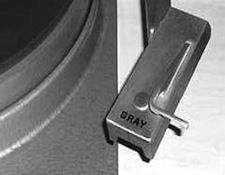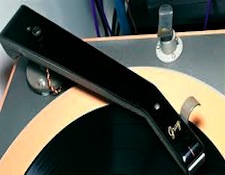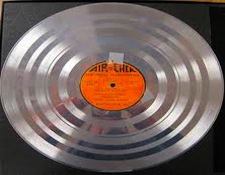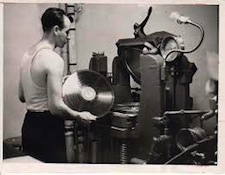It’s the time of year for saving money!
 Back in the ancient days of radio; before there was magnetic tape (or even wire) recording; before there were Long Playing (“LP”) records; and even before there were high quality phone lines, network radio programs would be broadcast “live” to those listeners within range of the originating station and, for the rest of the country, the live programs would be “transcribed” to 16 inch 78rpm records and copies would be physically sent out to the network’s “affiliate” stations for later broadcast.
Back in the ancient days of radio; before there was magnetic tape (or even wire) recording; before there were Long Playing (“LP”) records; and even before there were high quality phone lines, network radio programs would be broadcast “live” to those listeners within range of the originating station and, for the rest of the country, the live programs would be “transcribed” to 16 inch 78rpm records and copies would be physically sent out to the network’s “affiliate” stations for later broadcast.
Whether the 16 inch size was dictated by the need to be able to record 15 minute program segments at the then-standard speed of 78rpm on a single disc, or the length of the program segments was dictated by the recording time limits of a previously-existing disc format, I have no clue, but for whatever reason, a 16 inch 78 rpm disc would hold 15 minutes of program material, and worked perfectly as a means for the networks to get programming to their affiliated stations. Those stations would then, when they broadcast the programs to their local market, either use whatever network commercials might be on the disc, or skip them and add local commercials of their own during the necessary breaks for FCC-required station identification or changing and cueing-up the next program disc.
The turntables used for playing these 16 inch discs were called (for obvious reasons) “transcription” turntables, and the extra-long tonearms required for the bigger discs came to be known (for the same reason) as “transcription’ tonearms. (If you’ve ever come across that term before, now you know where it came from.) Among the transcription ‘tables on the market in addition to the ubiquitous RCAs, some of the most popular with broadcasters were those from Gray Research.
 To a broadcast or recording engineer whose livelihood depends on it, reliability is among the very first considerations in making an equipment purchase. That’s one reason why, in later years, Ampex tape recorders were the choice of professionals, instead of the distinctively wooden-cased Tandbergs (to cite just one example) that many people thought were actually better-sounding. Turntables (and arms) from Gray Research had reliability in abundance!
To a broadcast or recording engineer whose livelihood depends on it, reliability is among the very first considerations in making an equipment purchase. That’s one reason why, in later years, Ampex tape recorders were the choice of professionals, instead of the distinctively wooden-cased Tandbergs (to cite just one example) that many people thought were actually better-sounding. Turntables (and arms) from Gray Research had reliability in abundance!
Gray’s slogan was “Built like a battleship”, and they weren’t kidding: The Gray turntable’s base plate (and, if one was used, its “console” floor-standing cabinet) were made from quarter-inch thick real battleship-style armor plate and its 16 inch platter was concrete-filled; weighed in at – even by the standards of today’s most exotic record-playing gear – an impressive 75 pounds; and was spun by a four-pole washing machine motor!
 As must be obvious, with that much rotating mass and all the angular momentum of its 16 inch platter (especially at 78rpm!), the Gray ‘table’s “wow and flutter” figures (even with that four-pole motor) were phenomenal. So, too – again because of its sheer brute mass — were the ‘table’s platter resonance and (especially when console-mounted) its freedom from both internal and external vibration. About the only potentially worrisome element of the Gray’s operation might have been vertical “rumble”, but because, unlike modern stereo recordings, the monophonic grooves of the day were cut horizontal-only, with no (45 degree) vertical component and, consequentially, the phono cartridges of the time neither needed nor had any ability to retrieve vertical information, whatever vertical rumple there might have been was not a consideration.
As must be obvious, with that much rotating mass and all the angular momentum of its 16 inch platter (especially at 78rpm!), the Gray ‘table’s “wow and flutter” figures (even with that four-pole motor) were phenomenal. So, too – again because of its sheer brute mass — were the ‘table’s platter resonance and (especially when console-mounted) its freedom from both internal and external vibration. About the only potentially worrisome element of the Gray’s operation might have been vertical “rumble”, but because, unlike modern stereo recordings, the monophonic grooves of the day were cut horizontal-only, with no (45 degree) vertical component and, consequentially, the phono cartridges of the time neither needed nor had any ability to retrieve vertical information, whatever vertical rumple there might have been was not a consideration.
]]> The Gray tonearm, too, was something special. Just because of the need to “track” a larger (16″) disc, it was longer than the tonearm for a conventional (at the time) 10 inch or 12 inch record, and that greater length, just in itself, provided a significant reduction in playback tracking error. When you add to that high mass (to lower the effective system resonant frequency), fixed headshell construction (to limit cartridge mount flexure), and a system of viscous damping (a design feature that seems to be “re-discovered” every few years, and that, if done properly, can be of significant value), you come up with a tonearm that’s still surprisingly good, even by modern standards.
The Gray tonearm, too, was something special. Just because of the need to “track” a larger (16″) disc, it was longer than the tonearm for a conventional (at the time) 10 inch or 12 inch record, and that greater length, just in itself, provided a significant reduction in playback tracking error. When you add to that high mass (to lower the effective system resonant frequency), fixed headshell construction (to limit cartridge mount flexure), and a system of viscous damping (a design feature that seems to be “re-discovered” every few years, and that, if done properly, can be of significant value), you come up with a tonearm that’s still surprisingly good, even by modern standards.
 Now, just for fun, imagine a modern super-rigid, super-heavy 16 inch turntable with a transcription-length arm (a number of manufacturers still offer them) built with a modern bearing (maybe air; maybe magnetic levitation) that would eliminate even the remotest possibility of vertical rumble, driven by a modern hysteresis-synchronous motor off a fixed/variable VFO setup, for either pre-set or continually variable speed control. For all intents and purposes, even given the lessened-but-still-colossal-angular velocity and angular momentum of running its oversize platter at, not 78, but the more modern speeds of 33 1/3 or 45 rpm you’d still have, if everything were done right, effectively NO wow, NO flutter, NO rumble, dial-in total speed control, and at least near-perfect freedom from resonance and vibration.
Now, just for fun, imagine a modern super-rigid, super-heavy 16 inch turntable with a transcription-length arm (a number of manufacturers still offer them) built with a modern bearing (maybe air; maybe magnetic levitation) that would eliminate even the remotest possibility of vertical rumble, driven by a modern hysteresis-synchronous motor off a fixed/variable VFO setup, for either pre-set or continually variable speed control. For all intents and purposes, even given the lessened-but-still-colossal-angular velocity and angular momentum of running its oversize platter at, not 78, but the more modern speeds of 33 1/3 or 45 rpm you’d still have, if everything were done right, effectively NO wow, NO flutter, NO rumble, dial-in total speed control, and at least near-perfect freedom from resonance and vibration.
Hmmm, a modern day Gray ‘table. And probably buildable for something even approaching a believable price. Hmmm.
Anybody want to see the Gray turntable resurrected? We could even call it the “Gray Ghost”!





